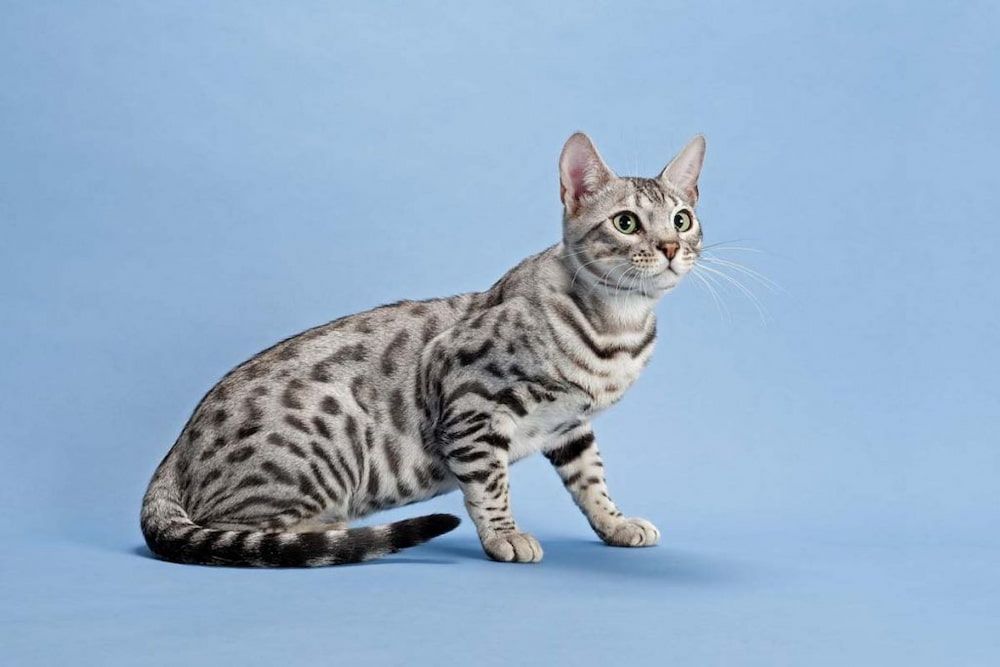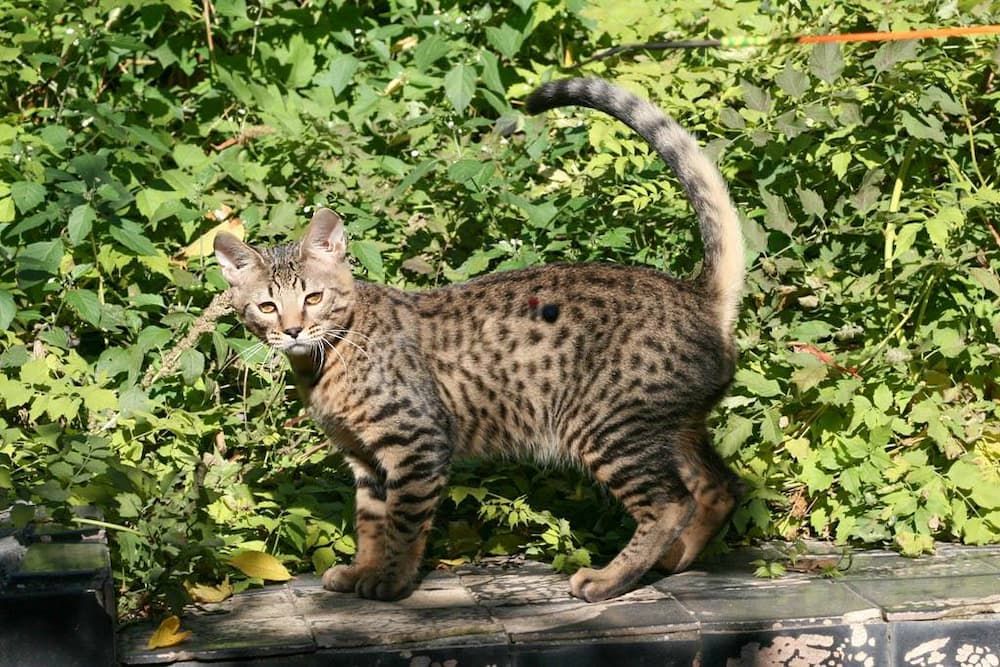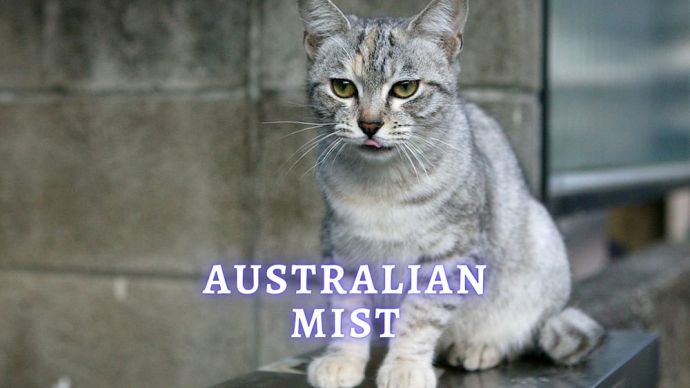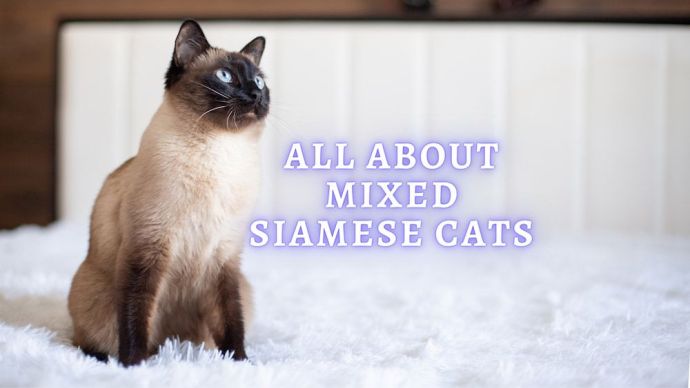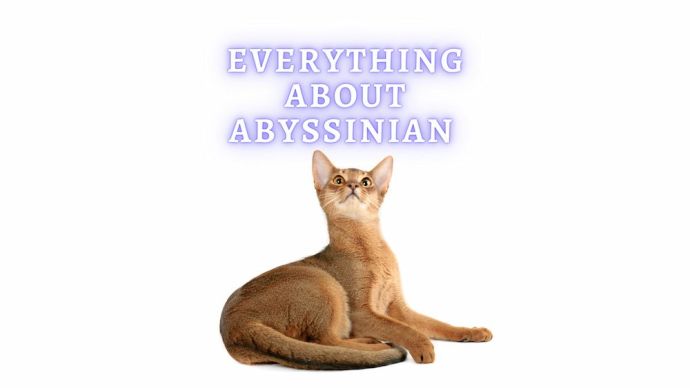Serengeti Cat: Serengeti Breed History, Temperament and Care
Written by:
Author: Vicki Smirnova
Vicki Smirnova is a professional writer and editor who adores animals and helps readers get along well with their pets. She has been working in digital media for more than 5 years and has great experience writing content about lifestyle, including pets. Vicki specializes in dog health and nutrition, cat feeding, dog training. She is an aquarium lover and is passionate to write about fish care at home. Also, Vicki headed several websites and worked as a news editor.
View all 245 articlesLearn about our editorial process and veterinary review board.
Viewed: 288
Updated on: 05/12/2023
Serengeti is a breed of domestic cat, obtained as a result of the gradual crossing of the Bengal, Oriental shorthair tabby, Abyssinian and European shorthair.
The animal was introduced in 1994 by its breeder, Karen Southman. Southman’s work aimed to create a breed of domestic pet, phenotypically as close as possible to servals living in Africa. It is forbidden to use wild cats, such as the serval itself, for breeding the Serengeti cats. At the moment, the breed is not recognized in the international cat association.
The Bengal breed served as the basis for breeding the Serengeti cats. From Bengals, Serengeti cat inherited large eyes, a wide nose, shiny thick fur, and a wild look. The Oriental shorthair breed gave the Serengeti a thinner torso and the shape of the eyes characteristic of servals. Orientals shorthair cat breed ave the Serengeti cats long legs and an elongated torso and large ears located on a wedge-shaped head.
Graceful features are combined with a strong skeleton, long legs and developed musculature. The Serengeti can be truly large and weigh up to 15 pounds. Serengeti cat has beautiful golden eyes, sometimes accentuated by a thin black stripe from the inner corners.
The fur may be different colors: ordinary black, tabby spotted, a sharp contrast of colors, smoky and black. The pattern of spots in the Serengeti is round (like Bengal), and sometimes there are somewhat elongated spots in the horizontal direction. [1]
Characteristics
| Weight | 8-15 pounds |
| Height | 8-10 inches |
| Colors and Patterns | Golden or gray colors, but always with eye-catching, leopard-style spots and markings. |
| Lifespan | 8-12 years |
| Suitable for | Family cat |
Breed History
The Serengeti is a relatively new and rare cat breed and first appeared in the nineties. It was developed by Karen Southman, a breeder, nature conservationist and biologist. The main idea was to create a breed that would combine the best qualities of domestic cats – kindness, intelligence and love for people – while having the appearance of a wild, African serval.
The Serengeti cat breeds originated from the crossing of Bengal cats and Oriental shorthair. A few years later, the Serengeti cat began to gain popularity, and other breeders worldwide joined the breeding program.
At the moment, the breed is recognized as experimental only in the TICA association, but the GCCF and international cat association has not yet recognized it. The number of cats of this breed worldwide is several hundred.
READ MORE: Best Cat Food for Bengals (Vet Approved Review)
Interesting facts about the cat breeds
- The cat breed got its name in honor of the Serengeti National Park, where the most significant number of servals live in nature.
- The Serengeti is hypoallergenic because it has a short coat.
- These are medium-sized pets that weigh from 8 to 15 pounds and are 8 to 10 inches long. The size of the male Serengeti is slightly larger than that of the female.
- These cats use different vocalizations to communicate. Along with vocalization, domestic or wild breeds also use body language.
- Serengeti cat can run up to 30 mph (48 km/h)!
READ MORE: Rare Cat Breeds
Temperament and personality of Serengeti domestic cat
The Serengeti has not only a memorable appearance but also a wonderful character. They inherited the best qualities from their parents: they are as smart and talkative as Orientals and as curious as Bengals.
Serengeti are active and inquisitive. They love outdoor games, are playful, have a variety of toys, are prone to climbing and have a habit of climbing on top shelves and on cabinets.
Serengeti are sociable and do not like to be lonely or paid no attention to. These cats strive for constant contact with people, and, with a lack of attention, they tend to persistently climb things. Serengeti quickly becomes attached to the family. Serengeti cat is gentle and affectionate. Breeders recommend such a pet even to inexperienced owners who have not had animals before. Serengeti will follow their owner everywhere and constantly seek attention.
As mentioned above, the Serengeti carries all the best qualities of domestic animals. Serengeti cat is loving, affectionate, able to feel the emotional state of its owner and other members of the family. They also love to be near their owner, regardless of what the owner is doing. Serengeti love children and are always ready to play.
Serengeti cats love to be the center of attention, but they do not always get along with other pets because of their playful nature. The Serengeti has a pronounced territorial and social attachment and a tendency to establish hierarchical relationships, leading to conflicts with other cats. It is also necessary to consider the developed hunting instinct in this breed; keeping them in the same house with small rodents can be unsafe.
The Serengeti loves to walk and explore the outdoors, and this desire does not pass with age. This should be kept in mind when preparing the home’s features in which the cat will live.
| Potential for playfulness | 5 |
| Activity level | 5 |
| Friendliness to other pets | 3 |
| Friendliness to other children | 5 |
| Grooming requirements and shedding | 2 |
| Need for attention | 4 |
| Affection towards owner | 5 |
| Intelligence | 5 |
| Independence | 3 |
Adoption and Care
Changing the home of the Serengeti cat can be pretty complicated, as they may feel uncomfortable – even if you just rearranged the furniture in the house.
Serengeti, a country house, and an ordinary apartment are suitable; however, these pets will definitely not like being locked up in a room. They need to spend their accumulated energy somewhere, and that is why you will have to get a leash and periodically walk your pet.
In addition, they are not inclined to be afraid of unfamiliar sounds and quickly get used to a new environment. Therefore, you do not have to accustom the animal to this kind of pastime; they will happily jump into the leash themselves when you are going for a walk.
It is easier for cat lovers of private houses: you can just let your pet out into the yard if there is no extra time for a walk. And, of course, you need to provide some entertainment in the house, because if the Serengeti does not find any, the pet will sharpen its claws on your sofa. Therefore, it would be better to buy special games for the Serengeti cat in a pet store or build a “mouse” on a rope and find time to play with your pet. Also, removing all fragile things from eye view would not be superfluous to avoid their breakage.
Specific care for pets of this breed is not required. There are no particular problems with the smooth coat of Serengeti cat. Specific health problems specific to this breed have not yet been identified because this breed is relatively young.
The Serengeti does not have any special requirements in terms of its nutrition. They require ordinary care, and once a week, it is recommended to personally examine the animal for malaise or unhealthy physical manifestations. Once or twice a week, wipe cat hair with a soft piece of cloth; otherwise, it may lose its shine. Do not forget to check and clean the cat’s ears if dirt has accumulated in them. To do this, use a cotton swab soaked in ear cleaning lotion. Bear in mind that these are large and fast-growing cats, so a kitten at the time of maturation and growth should be provided with a balanced diet with a large amount of calcium, phosphorus, and protein and should also be able to move a lot and in a variety of ways for the proper development of the musculoskeletal system. Some breeders also note the tendency of the Serengeti cat breed to develop kidney stones, so it is essential to take this into account when choosing food for these pets. [2]
Conclusions
The Serengeti cat breed is a tender and affectionate pet for an active person. There will definitely be no time to get bored with such a pet! However, it is important not to forget about animals’ innate curiosity and activity. To prevent cats from harming themselves, you need to monitor their access to electrical appliances and secret corners of the apartment. In order for the pet to let out some energy, it is advisable to buy cat trees, a scratching post, and some toys.
If you decide to buy this unusual pet, then it will be problematic to do so. There are not many official breeders, and the best nursery belongs to Karen Southman, who is located in America. Carefully check all documents during the purchase of a new pet because the probability of forgery is relatively high. Since the Serengeti is a rare cat, be prepared that the price will be appropriate. In general, it is quite possible to purchase this breed- you just need to be patient and careful when buying.
READ MORE: Best Cat Toys
FAQ
How much does a Serengeti cat cost?
Serengeti cat cost between $600 – $2,000.
How big do Serengeti cats get?
Graceful features are combined with strength based on a strong skeleton and developed musculature. Serengeti can be truly large and their weight can reach 15 pounds.
How long do Serengeti cat live?
The lifespan of the Serengeti breed of cats is 8-12 years.
Article Sources:
- “Serengeti Breed.” The International Cat Association, tica.org/breeds/browse-all-breeds?view=article&id=892.
- “Serengeti Mixed Cat Breed Pictures, Characteristics, & Facts.” CatTime, cattime.com/cat-breeds/serengeti.
 Cat Breeds Norwegian Forest Cat vs. Maine Coon: What are Their Similarities and Differences?
Cat Breeds Norwegian Forest Cat vs. Maine Coon: What are Their Similarities and Differences? - 121
- 0
 Cat Care Why Does My Cat Attack My Legs? 10 Reasons Why and What To Do About It (Vet-Approved Advice)
Cat Care Why Does My Cat Attack My Legs? 10 Reasons Why and What To Do About It (Vet-Approved Advice) - 45080
- 21
 Cat Veterinary Tips Cat Stomach Gurgling: Vet Advice on Why is Your Cat Stomach Gurgling?
Cat Veterinary Tips Cat Stomach Gurgling: Vet Advice on Why is Your Cat Stomach Gurgling? - 33729
- 4
 Cat Veterinary Tips My Cat Lost its Voice: Can Cats get Laryngitis? (Vet Advice)
Cat Veterinary Tips My Cat Lost its Voice: Can Cats get Laryngitis? (Vet Advice) - 22889
- 13











